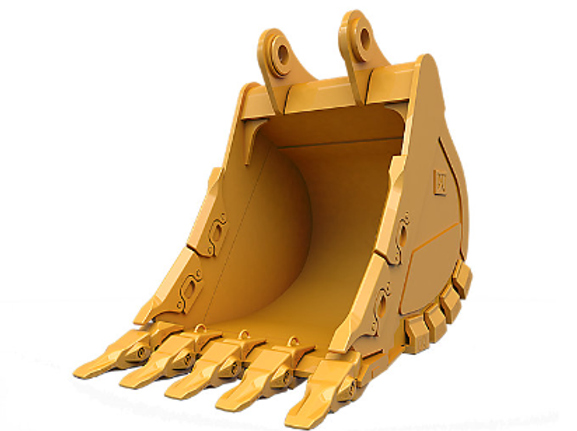Excavator buckets are versatile and indispensable tools in the world of construction and excavation, serving as the workhorses of heavy machinery. These rugged attachments come in a multitude of types, each tailored for specific tasks, and understanding their nuances is essential for operators and project managers. Furthermore, the correct selection, maintenance, and timely replacement of these buckets can profoundly influence both the performance of the excavator and the efficiency of your project.
As we journey through the world of excavator buckets, you will emerge with the knowledge needed to make informed decisions that can enhance project efficiency, ensure safety, and optimize the cost-effectiveness of heavy machinery operations. Whether you are a seasoned operator or a project manager seeking to make the best choices for your team, this guide will empower you with the insights required to make the most of these rugged workhorses.
Types of Excavator Buckets
Excavator buckets come in various types and designs, each suited for specific tasks and soil conditions. The choice of the bucket type depends on the nature of the excavation work and the material being handled. Here are some common types of excavator buckets:
General Purpose Bucket:
This is the standard bucket that comes with most excavators. It is versatile and suitable for a wide range of tasks, including digging, loading, and material handling.
Rock Bucket:
A rock bucket has reinforced construction with additional wear-resistant materials, making it suitable for handling rocky terrain and tougher materials.
Ditching or Grading Bucket:
Ditching buckets have a wide, shallow design, making them ideal for grading, leveling, and shaping surfaces. They often have a smooth cutting edge.
Skeleton or Grapple Bucket:
Skeleton buckets have gaps between the tines or bars, allowing finer materials like soil to fall through while retaining larger objects. Grapple buckets have a more enclosed design with grab arms for handling irregularly shaped objects.
Tilt Bucket:
Tilt buckets have a tilting mechanism that allows the bucket to tilt left or right. This feature provides increased flexibility when working on uneven surfaces.
Mud or Clamshell Bucket:
Mud buckets, also known as clamshell buckets, have two hinged jaws that resemble a clamshell. They are often used for dredging and excavation in soft, muddy conditions.
Choosing the Right Bucket
Choosing the right bucket for an excavator is crucial for optimizing performance and efficiency in various excavation tasks. The selection process involves considering factors such as the type of material to be excavated, the nature of the terrain, and the specific job requirements.
Extending the Bucket’s Lifespan
To ensure your excavator bucket lasts as long as possible:
1. Proper Lubrication: Regularly lubricate pivot points and moving parts to reduce wear and friction. Adequate lubrication not only prolongs the life of the bucket but also enhances its performance.
2. Maintain Sharp Teeth: Keep bucket teeth sharp to improve digging efficiency. Replace worn or damaged teeth promptly to ensure the bucket continues to operate at peak performance. Well-maintained teeth also reduce fuel consumption.
3. Avoid Overloading: Overloading the bucket can cause structural damage and accelerate wear. Follow the manufacturer’s recommendations for maximum load capacity to prevent undue stress on the bucket and the machine.
4. Regular Inspection: Schedule routine inspections of the bucket to identify wear and damage. These inspections should include checking for cracks, loose components, and alignment issues. Timely detection of issues allows for proactive maintenance or repair.
How to Change an Excavator Bucket
Changing If you’re operating an excavator and need to switch out the bucket for a different job, it’s essential to know the proper procedure to ensure safety, efficiency, and avoid common mistakes. In this guide, we’ll walk you through the steps for changing an excavator bucket, focusing on the tools needed, safety requirements, the time it takes, and the most common mistakes made.
Conclusion
Understanding the nuances of excavator buckets, from their types to maintenance and replacement, empowers operators and project managers to make informed decisions that can enhance project efficiency, safety, and cost-effectiveness. Choosing the right bucket and taking care of it properly can make a significant difference in the success of excavation and construction projects.
Post time: Nov-24-2023
